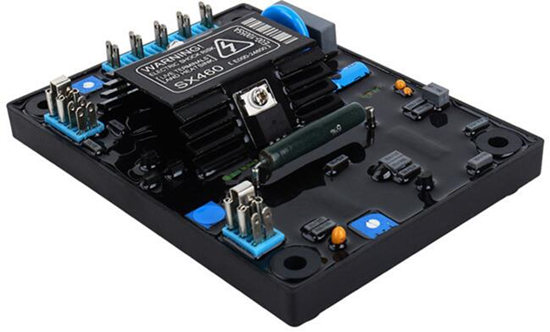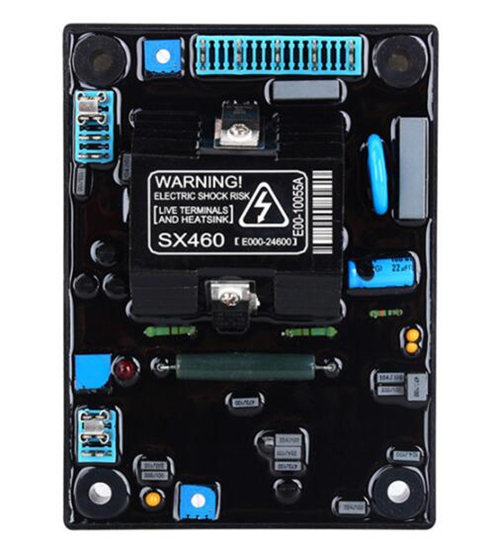To adjust generator voltage, first consult the user manual, then locate and adjust the voltage regulator. Generators are essential tools for providing power where electricity is unavailable.
They come in various sizes and capacities, making them suitable for a range of applications from camping trips to emergency power supply during outages. Understanding how to adjust the voltage of your generator is crucial for ensuring the safety and efficiency of your devices connected to it.
This process can vary slightly depending on the model of your generator, but the basic steps involve accessing the generator’s control panel and making adjustments to the voltage regulator. Proper maintenance and adjustment of your generator ensure it operates at optimal performance, providing reliable power when you need it most.
Introduction To Voltage Adjustment In Generators
Adjusting the voltage on a generator ensures optimal performance and safety. Generators need the right voltage to run appliances and tools properly. It’s essential to understand how to make these adjustments correctly.
Importance Of Correct Voltage
Generator voltage must match the needs of connected devices. Correct voltage ensures efficiency and prevents damage to both the generator and electronic equipment. A stable voltage output is crucial for the longevity of all connected appliances.
Safety Precautions
- Always read the generator’s manual before making adjustments.
- Wear protective gear, such as gloves and goggles.
- Ensure the generator is off and cool before starting.
- Keep tools and other conductive materials away from live parts.
Basic Concepts Of Generator Operation
Generators are vital for producing electricity when the main power is out. They convert mechanical energy into electrical power, ensuring homes and businesses keep running smoothly. Understanding generator operation is key to maintaining steady voltage output.
How Generators Produce Electricity
Generators create electricity through electromagnetic induction. This process involves a rotating component, known as the rotor, and a static part called the stator. Together, they generate electric current.
- Rotors spin inside generators to create a magnetic field.
- Stators contain coils of wire that conduct electricity.
- Magnetic fields moving near wires induce electrical current.
Role Of Voltage Regulation
Stable voltage is crucial for device safety and efficiency. Generators use voltage regulators to maintain a constant voltage level. This component adjusts the power output to match the load demand.
| Component | Function |
|---|---|
| Voltage Regulator | Keeps voltage steady |
| Sensors | Monitor voltage levels |
| Control Unit | Adjusts the rotor’s magnetic field |
These components work together to prevent voltage fluctuations. Correct voltage regulation protects appliances and prolongs generator life.
Types Of Generators
Understanding generator types is key before adjusting voltage. Let’s explore.
Portable Vs. Standby Generators
Portable generators offer flexibility and convenience. They are compact and easy to move. Use them for outdoor activities or emergencies. Standby generators, on the other hand, are permanent fixtures. They provide automatic backup power for homes and businesses. Standby units are more powerful and reliable over time.
| Generator Type | Pros | Cons |
|---|---|---|
| Portable | Mobility, Cost-effective | Less Power, Manual Operation |
| Standby | Automatic, High Power | Higher Cost, Stationary |
Single-phase Vs. Three-phase Generators
Single-phase generators are suited for homes and small businesses. They are simple and cost less. Three-phase generators are for industrial settings. They handle high power loads better and are more efficient in these environments.
- Single-Phase:
- Lower Cost
- Simple Setup
- Home Use
- Three-Phase:
- High Power
- Efficient
- Industrial Use

Credit: www.youtube.com
Tools And Equipment Needed
Adjusting your generator’s voltage requires the right tools and equipment. Knowing which tools are essential can make the task much easier and safer. This guide outlines everything you need to adjust your generator’s voltage accurately.
Multimeter Usage
A multimeter is crucial for this task. It measures voltage, current, and resistance. Here’s how to use it:
- Turn off your generator.
- Set the multimeter to measure voltage.
- Connect the multimeter’s probes to your generator’s output terminals.
- Turn on the generator and read the display.
This will show your generator’s current voltage output.
Other Essential Tools
Besides a multimeter, you’ll need:
- Screwdrivers: For opening the generator’s cover.
- Adjustable wrench: To adjust nuts and bolts.
- Gloves and safety glasses: For protection.
Ensure you have these tools ready before starting.
Step-by-step Voltage Adjustment Process
Adjusting your generator’s voltage is an important task. It keeps your generator running smoothly. Here is a step-by-step guide to help you do it safely and effectively.
Starting The Generator
- Ensure the generator is on a flat surface.
- Check the fuel and oil levels.
- Turn the fuel valve to the “On” position.
- Move the choke to the “Start” position if it’s cold.
- Press the start button or pull the start cord sharply.
- Let the generator run for a few minutes to warm up.
Locating The Voltage Regulator
The voltage regulator is key to adjusting the voltage. It is usually found inside the generator’s housing. Follow these steps to locate it:
- Turn off the generator and disconnect it from any power source.
- Remove the cover or access panel to the generator.
- Look for a small box with wires connected to it. This is the voltage regulator.
Making The Adjustment
Making the right adjustment is crucial. Here’s how:
| Step | Action |
|---|---|
| 1 | Identify the adjustment screw on the voltage regulator. |
| 2 | Use a screwdriver to turn the screw. Clockwise increases voltage, counterclockwise decreases it. |
| 3 | Make small adjustments. Check the voltage with a voltmeter. |
| 4 | Continue adjusting until you reach the desired voltage. |
| 5 | Replace the cover and reconnect any power sources. |
Remember: Always take safety precautions. Wear gloves and protective eyewear. Do not adjust the generator while it is connected to any appliances.

Credit: www.dieselgeneratortech.com
Troubleshooting Common Issues
Generators are essential for reliable power. Yet, voltage issues can occur. Knowing how to troubleshoot is vital.
Dealing With Fluctuating Voltage
Consistent voltage is key for generator performance. Fluctuations can harm connected devices. Signs include lights dimming or equipment malfunctions.
- Check the generator’s load. It should not exceed the rated capacity.
- Inspect the connections. Loose wires can cause voltage changes.
- Test the voltage regulator. It maintains output stability.
Use a multimeter to monitor the voltage. If it varies, adjust the regulator. Follow the manual for precise steps.
When To Seek Professional Help
Some issues need expert intervention. Recognize when to call a technician.
| Sign | Action |
|---|---|
| Severe voltage swings | Professional diagnosis |
| Continuous overload alerts | Check with a service provider |
| Burnt electrical smell | Stop use immediately. Seek help. |
Dedicated generator technicians can find and fix complex issues. Regular maintenance also prevents future voltage problems.
Maintenance Tips For Optimal Performance
Maintenance Tips for Optimal Performance ensure your generator runs smoothly. Regular upkeep adjusts voltage output. Proper maintenance avoids unexpected breakdowns. Follow these guidelines for peak efficiency.
Regular Inspection And Cleaning
Generators require consistent checks. Dust and debris impact performance. A clean generator means stable voltage levels. Perform these steps:
- Check for loose connections weekly.
- Clean dust and debris from vents.
- Inspect fuel lines for leaks.
- Replace worn-out parts promptly.
Scheduled Professional Servicing
Experts ensure your generator’s longevity. They fine-tune engine components. Professionals calibrate voltage regulators accurately. They spot issues before they worsen. Stick to a servicing schedule:
| Service Interval | Action |
|---|---|
| Every 6 months | Full system diagnostics |
| Annually | Oil and filter change |
| Every 2 years | Battery inspection/replacement |
Follow these maintenance tips. Enjoy uninterrupted power. Keep your generator in top condition.

Credit: www.dieselgeneratortech.com
Legal And Compliance Considerations
Legal and Compliance Considerations are crucial when adjusting generator voltage. Before tweaking your generator, understand the legalities and warranty implications. This ensures safe operation and compliance with local laws. Let’s delve into these aspects.
Adhering To Local Regulations
Different areas have specific electrical codes. These codes dictate generator use. Always check these regulations first. Non-compliance can lead to fines or legal action. It also ensures the safety of your community.
- Contact local authorities for guidelines.
- Understand national and local electrical codes.
- Keep your setup within legal voltage limits.
Generator Modifications And Warranty
Modifying your generator can void its warranty. Read the warranty terms carefully. Contact the manufacturer before making changes. They can guide you on safe adjustments. This protects your warranty and investment.
- Review the generator’s warranty policy.
- Seek manufacturer guidance for adjustments.
- Document all changes for future reference.
Frequently Asked Questions
How Does Generator Voltage Adjustment Work?
Adjusting generator voltage typically involves regulating the alternator’s field current through a voltage regulator to maintain a steady output despite load changes.
What Tools Are Needed For Voltage Adjustment?
A multimeter and a screwdriver are essential tools for measuring the voltage output and adjusting the voltage regulator on a generator.
Can I Safely Adjust My Generator’s Voltage?
Yes, you can safely adjust your generator’s voltage by following the manufacturer’s instructions and taking proper safety precautions.
Why Might Generator Voltage Need Adjustment?
Voltage adjustment may be needed to ensure that the generator provides a stable and correct voltage level for the connected devices to function properly.
When Should I Check My Generator’s Voltage?
Regularly check your generator’s voltage during routine maintenance or if you notice fluctuations in power output to prevent potential damage to connected equipment.
Conclusion
Mastering generator voltage adjustments is crucial for optimal performance and safety. By following the steps outlined, you ensure your generator runs efficiently. Remember, regular maintenance is key. For further guidance, consult your manual or a professional. Keep powering on with confidence!




